Inside the Whirlwind Launch of the Professional Women’s Hockey League’s Broadcast Operations
Raycom, Dome get PWHL into the rink in less than half a year
Story Highlights
Launching a brand-new professional sports league in just six months is no easy task. Neither, for that matter, is building its broadcast department in less than half that time. Yet that’s exactly what the Professional Women’s Hockey League (PWHL) did in the closing months of 2023.
In advance of its inaugural season opener on Jan. 1, the fledgling league worked with Raycom Sports in the U.S. and Dome Productions in Canada to architect an end-to-end broadcast ecosystem that included live production and transmission from six cities across North America, distribution to broadcast partners in both the U.S. and Canada, digital-content creation, and media-archiving capabilities.
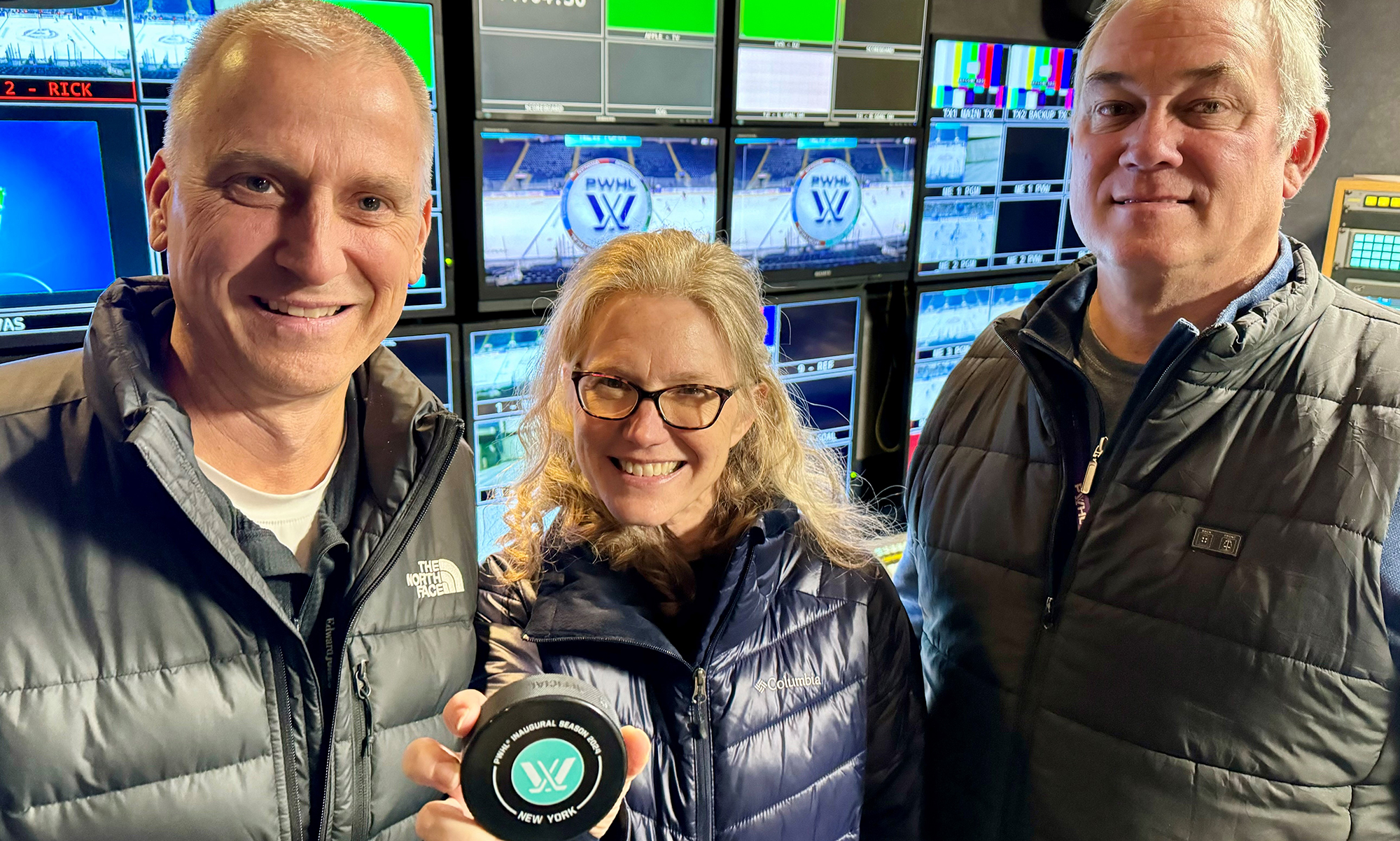
In the truck for the league’s opening-week productions: (from left) Producer Andy Block; PWHL VP, Media and Innovation, Diane Penny; and Director Tim Deroin
“We were building the plane while it was in the air,” says PWHL VP, Media and Innovation, Diane Penny, who came aboard in November just weeks before the Jan. 1 opener. “It was an all-hands-on-deck effort. Throughout the entire process, [we had] a player-first and fan-first mentality: how can we better serve the players and the fans? We never stop striving to improve on that, and it’s only going to continue as we move through this season.”
Despite an excruciatingly short timeline, the broadcast-operations effort was ready to go in time for the league’s opening games (which were largely sold out and attracted impressive TV viewership in Canada). In addition, the league inked broadcast deals for all 72 PWHL regular-season games to air or stream nationally in Canada with CBC/Radio-Canada, TSN and RDS, and SportsNet, along with deals with RSNs in each of the three U.S. teams’ home markets: MSG Networks in New York, NESN in Boston, and Bally Sports North in Minnesota.
“Right from the beginning,” says Jeremy Langer, special advisor to the PWHL Board, who helped formulate the league’s broadcast plans, “one thing that the [league] leadership and the players made clear was the importance of professionalism across the board. In terms of the television product, that meant we needed to have a production quality that was [on par] with what our fans would expect from any other major league. We knew we had to be creative to get this done, but we were not willing to compromise on that; professionalism was our guiding principle.”
Birth of a New League: How the PWHL Came To Be
Langer was brought aboard in early 2023 as a consultant by Mark Walter Group, which was exploring the launch of a new pro women’s hockey league and was in talks with the newly formed Professional Women’s Hockey Players’ Association. He was part of a team that conducted due diligence regarding potential markets, venues, media partners, and other opportunities. He then made recommendations to the Mark Walter Group advisory board, which wanted to ensure that a collective-bargaining agreement was in place with the players before the league moved forward.
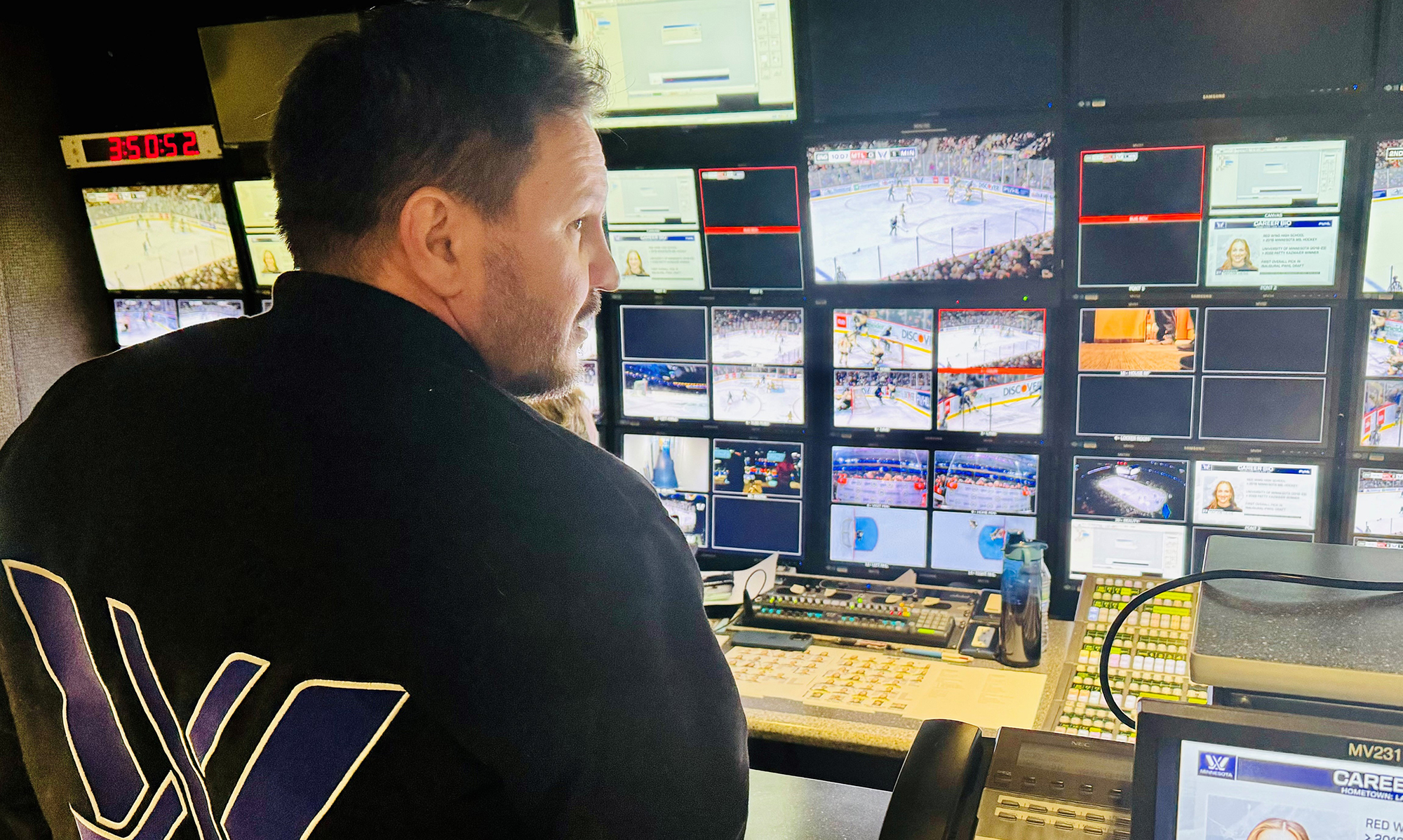
Jeremy Langer, a special advisor to the PWHL Board, helped formulate league’s broadcast plans.
On June 30, Mark and Kimbra Walter officially announced acquisition of the now-defunct PHF along with plans to form a new women’s pro hockey league in its place. The players union ratified the collective-bargaining agreement three days later, and the league that would become the PWHL was off and running.
“I had already been laying a lot of the groundwork behind the scenes while the CBA was being negotiated,” says Langer, a media consultant who has served as a VP at Tennis Channel and Fox Sports. “Once that was completed, we went full tilt into actually building the league.”
The Walters and the advisory board (comprising tennis legends Billie Jean King and Ilana Kloss, Dodgers President/CEO Stan Kasten, and Dodgers SVP, Business Strategy, Royce Cohen) pegged an ambitious launch date of Jan. 1, 2024 — less than six months away – and Langer and his team began building out broadcast plans in earnest.
The six charter franchises — Boston, Minneapolis-St. Paul, Montreal, New York City, Ottawa, and Toronto — were announced in August, and the league’s first draft took place in September in the atrium of the CBC Broadcast Centre in downtown Toronto.
“Throughout all this,” says Langer, “I was making phone calls to folks from my past working in sports media to identify companies that could handle the production side. If we were going to deliver on this promise of professionalism, we needed to have partners who understood the market and could tell us what needed to be done in order to be successful.”
After a thorough but rapid evaluation, the PWHL partnered with Raycom Sports for game productions in the three U.S. cities and with Dome Productions for the three in Canada.
“In addition to professionalism,” says Penny, “it was also important that Raycom and Dome were in alignment with our goal of uplifting women and putting the players front and center. Outside of their technical expertise, we also knew that both Raycom and Dome would be allies and support the mission. They’re not just contractors; they are authentically invested in the mission of this league, and that shows through the care that they have put into it.”
Raycom Handles Stateside Games Plus File-Based Workflows League-Wide
Raycom Sports is producing broadcasts in Boston, Minneapolis-St. Paul, and New York City using a mix of its own trucks and mobile units contracted from Mobile TV Grupo and CSP Mobile Productions.
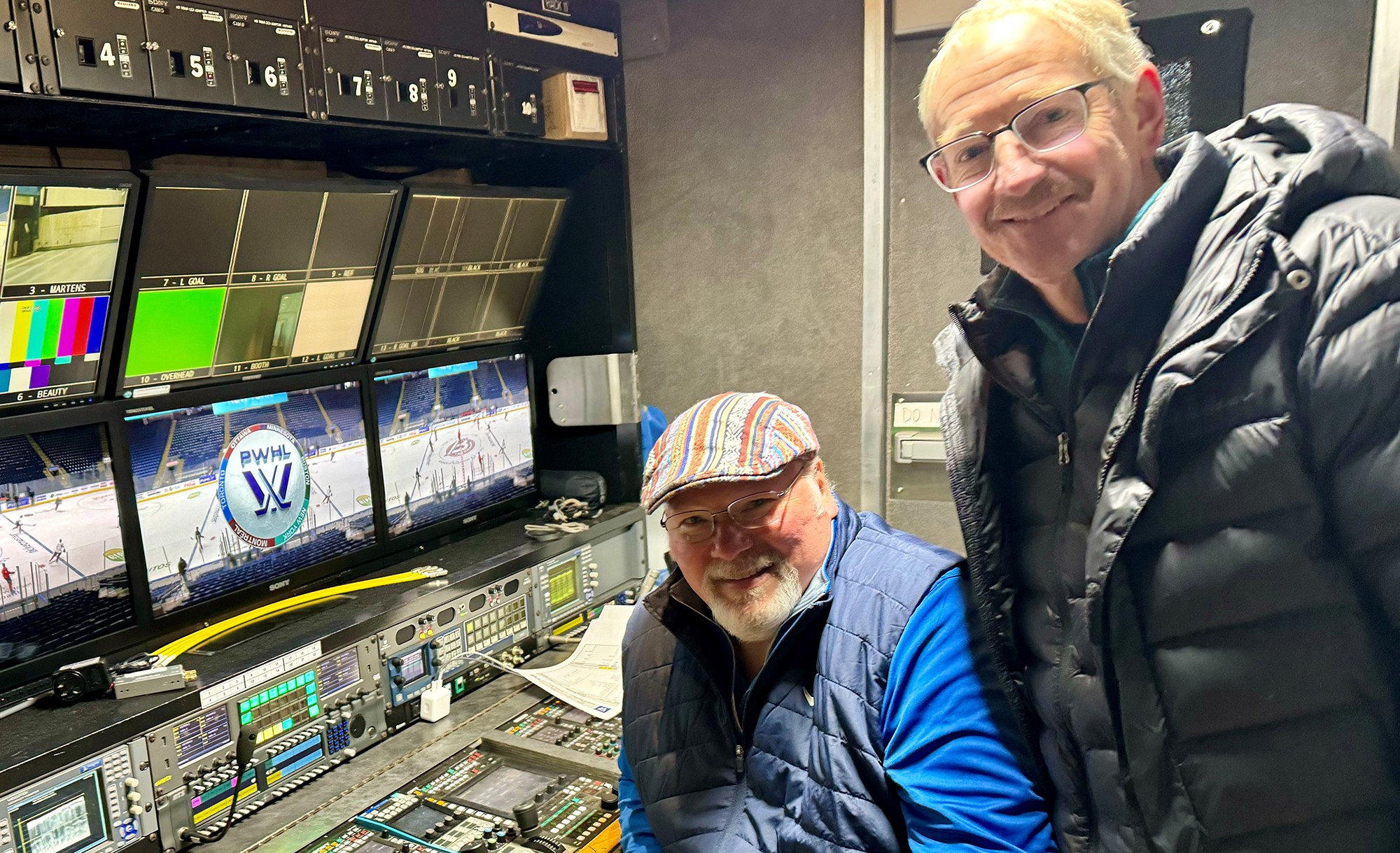
Raycom Sports engineers Tom Green (left) and Mark Yarger
“We were planning for this season without knowing what to expect,” says Bill Stafford, VP, engineering and technology operations, Raycom Sports, “so we decided to go with truck and crew onsite for every show. That gave us flexibility to adjust down the road if we needed to. We also decided to [enlist] a local producer, director, talent, and crew — just like a regular [regional sports network] would for their home shows.”
Coverage of each game deploys a standard five-camera complement — three hard, two handheld — plus two robos and five Marshall POVs (announce booth, penalty box, behind the net). When possible, Raycom is also partnering with the respective venues to share camera feeds (such as the overhead robo on the center-hung videoboard). Most games have three 6-channel EVS replay systems and an EVS SpotBox.
The Chyron-based graphics was designed by the league in partnership with UNINTERRUPTED Canada, and TV Graphics (TVG) built the clock-and-score bug.
Raycom has deployed standard mics across each venue and for the announcers, as well as additional audio drops on the benches and in the runways to accommodate player interviews and more.
“In terms of the tech and camera complement,” says Stafford, “we focused on the key components that we would need to produce a really good, clean show. The goal is not to overcomplicate this show to start out: just keep it simple, crisp, and clean. The spirit of the deal [with PWHL] was to start out solid and basic so that nothing fails [to start the season]. Then, we can evolve and add bells and whistles as we head towards the playoffs.”
Besides overseeing live game productions, Raycom Sports also created a cloud-based archiving and file-transfer workflow for the league’s content-creation operation.
“We’ve been archiving for years at Raycom Sports,” notes Stafford, “so we were able to set them up with a file-sharing [system] that connected all the teams, the league itself, and all the broadcast partners. We’re also producing a lot of [shoulder] content for the league. Moving forward, we’ll continue to pivot and evolve [as necessary].”
Aside from Stafford and CEO Hunter Nickell, key contributors from Raycom Sports include Executive Producer Rob Reichley; Director, Broadcast IT, Tom Scholle; Broadcast Logistics Managers Kellie Bowen and Jenny Iler; Directors Tim Deroin and Jason Clemens; and Producers Andy Bock, Casey Carter, and Rick Palermo.
“When the opportunity was first presented,” says Stafford, “it was very exciting but also very daunting because there were a lot of unknowns [in terms of] the venues, the schedule, and the logistics. But we knew we would figure it out, and I couldn’t be prouder of the entire Raycom team – from the engineering to logistics to archive and content teams. Everybody understands what is at stake in launching a brand-new league; and they all stepped up to make this happen.”
Dome Manages Productions Up North, Transmission Across the Board
Meanwhile, north of the border, Dome Productions is providing production services and its own mobile units for games in Montreal, Ottawa, and Toronto. These games feature similar camera complements and equipment levels to the U.S. productions with five cameras plus robos and POVs.
In addition, Dome is handling all transmission from the venues and distribution to PWHL’s broadcast partners through its Toronto-based network operations center (NOC).
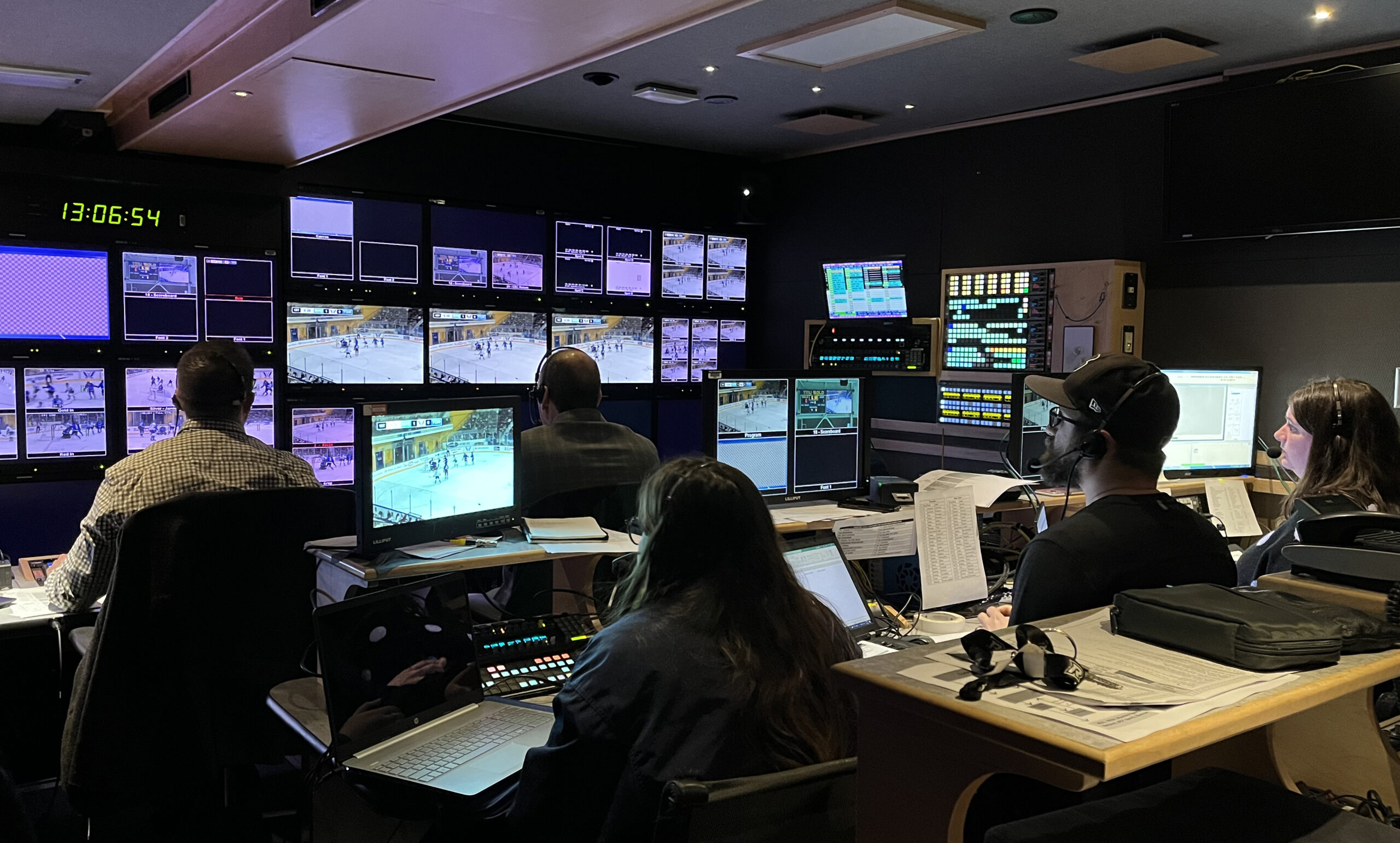
Dome Productions is providing production services and its own mobile units for games in Montreal, Ottawa, and Toronto.
“It has been fast and furious,” says Kate McClure, director, production services, Dome Productions. “We received a tentative schedule in November and weren’t able to start crewing and booking facilities until then. It has come together remarkably quick, but it has been really successful because of the quality partnerships and open communication with the PWHL and Raycom.”
Although Dome has been known for its mobile production units and transmission offerings for decades, its production-services division launched only a few years ago and has served outfits like the CEBL (Canadian Elite Basketball League) and NLL (National Lacrosse League). With Senior Production Manager Thomas Jinkinson and Executive Producer Mike Brock leading the charge, the PWHL partnership marks the production services’ largest endeavor to date.
“To be given the opportunity to be the storyteller for this league is a huge opportunity for Dome, and we’re thrilled,” says McClure. “There’s a great opportunity to engage a new audience here, so we feel strongly that these stories need to be told properly. We’re obviously very excited, but we also have a great sense of responsibility and are putting a lot of pressure on ourselves to make sure this is done right.”
On the transmission side, Dome is leveraging SRT for primary and secondary contribution paths and is deploying SRT encoders at all PWHL venues (with Dejero GateWay systems as backup). The feeds move through Dome’s Toronto NOC and are redistributed to PWHL broadcast partners. During live game production, Dome is in constant communication with the truck onsite and handles all QC for the paths into Toronto and out to rightsholders.
“From a transmission perspective, we were brought in quite late — around the end of November,” says David August, director, digital services and emerging technology, Dome Productions. “They were already putting together some structure for production, but they hadn’t started talking about transmission yet. We relied on our internal staff, who have a lot of experience building host broadcast services and internal resources, to quickly come up with a solution that allowed us to provide [connectivity] from each venue and add more [as necessary].”
Navigating a Wide Spectrum of Venues Across Two Countries
Because of scheduling, most of the PWHL teams will play home games at multiple arenas this year. They run the gamut from NHL-level venues UBS Arena on Long Island and Xcel Energy Center in St. Paul to minor-league and college-hockey buildings Verdun Auditorium in Montreal and Tsongas Center in Boston.
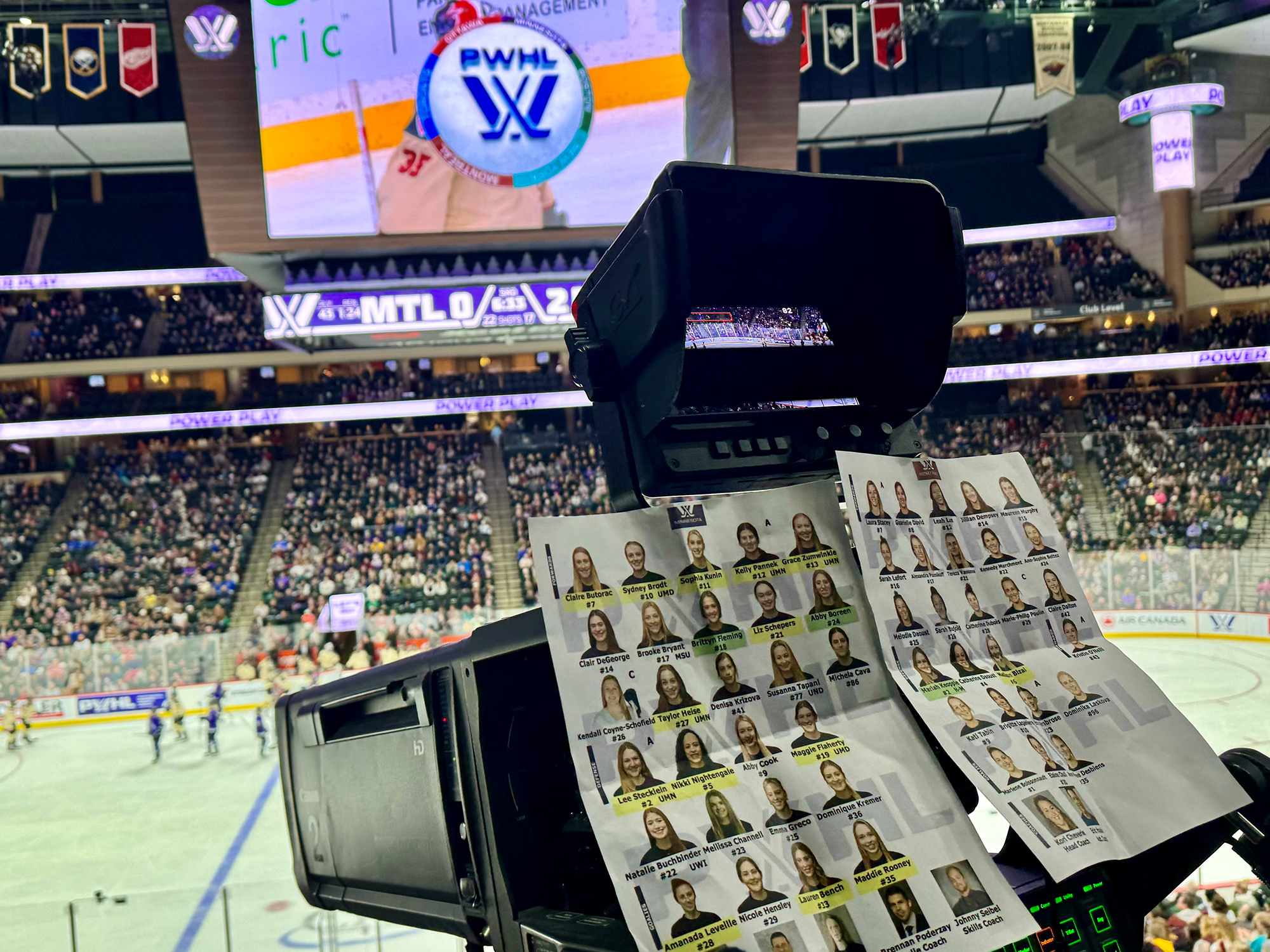
Xcel Energy Center in St. Paul is one of a dozen venues the PWHL will visit this year.
“We are working with some venues that weren’t necessarily teed up for the type of operation that we’re bringing in — from not only a broadcast perspective but also a game-operations perspective,” says Penny. “A lot of this was learning on the fly; if something doesn’t work out for one game, we immediately figure out [how] to make sure we can bring that to life for the next game. And that will continue all season long.”
With a dozen different venues in play throughout the season — and potentially more to come — this created an additional challenge for Dome’s transmission team.
“Since the teams don’t play all their games at the same home venues, we took a kit-focused [approach],” August adds. “That way, we could have something that could travel with our production teams and be easily set up at each venue. We already cover [NHL hockey] in Ottawa, Toronto, and Montreal, so it works out really well from a transmission perspective. We just had to plan accordingly for the [three U.S. cities].”
A Watershed Moment for Women’s Hockey
The colossal multinational effort looks to have paid off, at least according to early returns. The PWHL’s sold-out opening game in Toronto on New Year’s Day was viewed by 2.9 million people in Canada, along with hundreds of thousands more on the league’s YouTube channel. The game — simulcast across CBC, Sportsnet, and TSN — was the most-watched New Year’s Day program on Canadian TV, topping the NHL Winter Classic on Sportsnet and both College Football Playoff semifinal games on TSN.
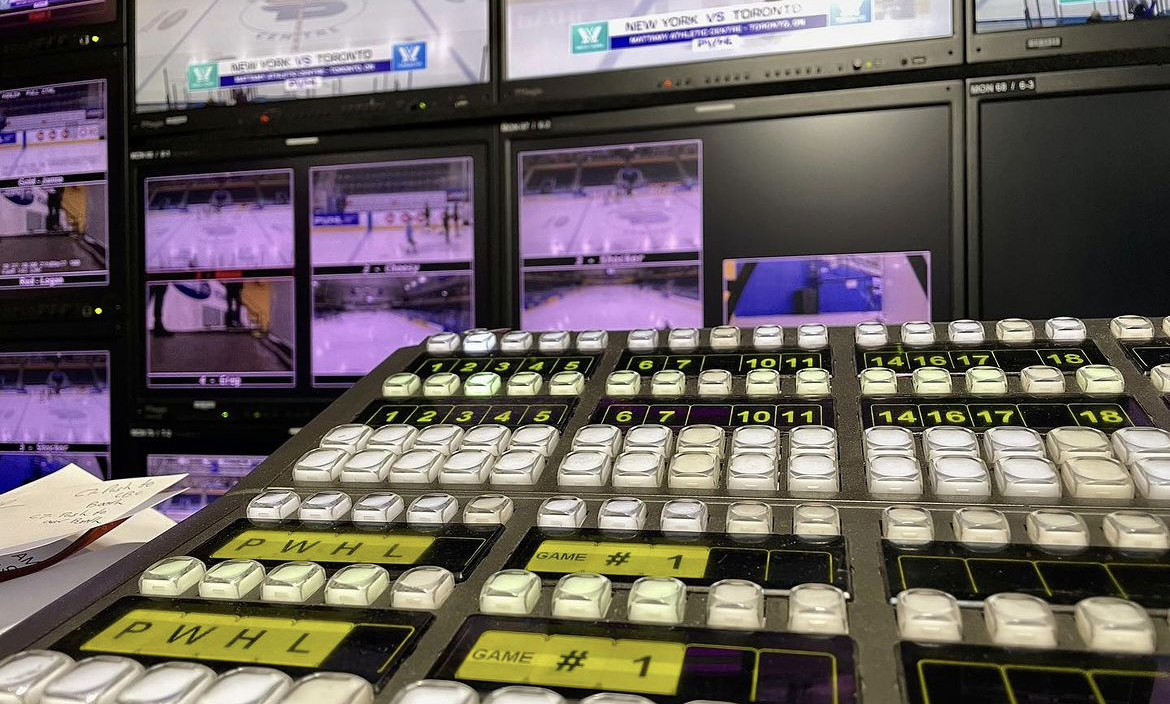
The PWHL, Raycom Sports, and Dome Productions will look to evolve game productions as the season progresses.
“These last few weeks have been an unbelievably emotional experience for all of us,” says Langer. “We knew we would have only one shot to come out of the gate and do this right. Seeing the look on the faces of the moms and the dads [in the stands], the excitement coming from all the little girls, the 60- and 70-year-old women in the crowd tearing up, and, most important, the look of pride and joy on the players’ faces makes me very proud to play even a small role.”
Asked about her role with PWHL, Penny says, “Pride beyond words — that’s how I would put it. It’s not just about [delivering] a great product; this is also about being part of the larger journey of women’s sports, which truly is a movement. This is yet another big step that will help propel that journey forward, and it’s amazing to be a part of something like that.”
